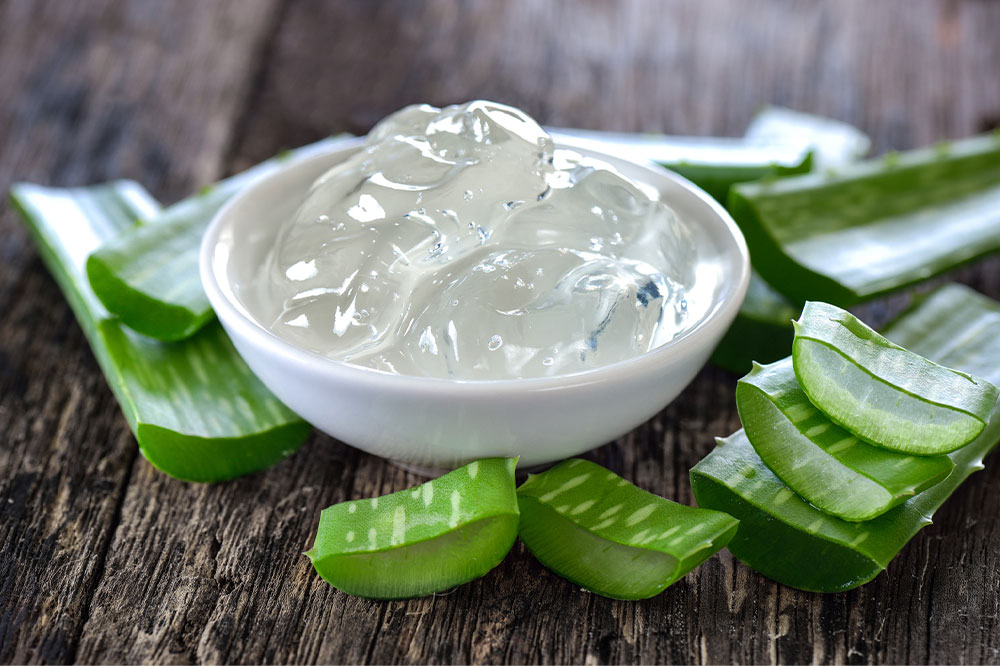12 Easy Natural Remedies to Relieve Eczema Symptoms

Eczema affects around 31.6 million people in the country. It causes inflamed, itchy, cracked, or rough skin. The most common type of eczema is atopic dermatitis, most commonly seen in children. Given its wide prevalence, numerous natural remedies have recently been popularized to manage the disorder at home. Although these have been effective for some, it is best to speak to a licensed dermatologist before adding them to your routine.
Aloe vera gel
Aloe vera gel derived from the aloe vera plant is great for soothing eczema symptoms. The gel has antibacterial and antimicrobial properties and helps boost the immune system, improving wound healing. Aloe gel can be purchased online or in stores. Alternatively, you can grow the aloe plant in your garden and extract the gel from its leaves; it is an eco-friendly option. When purchasing the gel, look for products with few added ingredients. Added colors, preservatives, and fragrances can dry the skin and worsen eczema. Before applying on irritated skin, do a patch test to check for skin sensitivity. Aloe vera is mostly safe and effective for children and adults alike.
Apple cider vinegar
According to the National Eczema Association (NEA), small amounts of apple cider vinegar can help with eczema. But you must exercise caution during application, as the acids from the vinegar can damage soft tissue. It is best to dilute the vinegar before applying it. This will balance its acidity levels and strengthen the skin’s defenses against bacteria like E. coli and S. aureus. Apple cider vinegar can be applied to the skin in a wet wrap or a bath soak.
Bleach baths
A mild bleach bath has antibacterial and anti-inflammatory effects, which can help improve eczema symptoms. To prepare the bath, dilute half a cup of regular strength (6%) plain bleach in a bathtub full of water (or one teaspoon of bleach for every gallon of water), and soak in the bath for five to ten minutes. Rinse off thoroughly after the bath, and moisturize the skin immediately after drying. Do not continue bleach baths in case of any discomfort, itching, or irritation. People with asthma and breathing issues should avoid this remedy altogether.
Oatmeal baths
Oatmeal, especially colloidal oatmeal, has antioxidant and antibacterial properties that can help improve skin dryness, scaling, itching, and roughness. Adding powdered it to a bath can significantly help improve eczema symptoms. But pick a product with no additional fragrances or preservatives for the best results. Lotions and creams with colloidal oatmeal can also help with eczema. Colloidal oatmeal baths are an excellent eczema home remedy for people of all ages who are not gluten sensitive or allergic to oatmeal.
Baths with lukewarm water
Even a simple bath can help eczema patients by giving the skin the hydration it needs. The NEA advises taking a bath or a shower at least once daily with lukewarm water. But you must limit the bathing time to ten to 15 minutes, avoid scrubbing the skin vigorously, and use gentle cleansers. Also, try different baths (like vinegar, baking soda, or oatmeal) when possible. Avoid bathing too frequently, as this can strip the skin of essential oils. Moisturize after the bath to keep the skin supple and hydrated.
Coconut oil
Coconut oil has essential fatty acids that hydrate the skin and help reduce the symptoms of eczema. Virgin coconut oil can also help combat inflammation and improve the skin barrier’s health. Apply cold-pressed virgin coconut oil directly to the skin after a bath. Repeat the process as needed to keep the skin smooth and hydrated throughout the day.
Honey
Honey is naturally an antibacterial and anti-inflammatory product that can help heal wounds and boost the immune system. It also has moisturizing properties that help with itching and dryness. For treatment, apply Manuka honey onto the affected area to moisturize the skin and accelerate the healing process.
Tea tree oil
Tea tree oil is used to treat many skin problems, including eczema. It has wound-healing, anti-inflammatory, and antibacterial properties that help relieve the symptoms of eczema. Before application, mix tea tree oil with a carrier oil (such as almond or olive oil), and apply the solution to the affected area.
Eating anti-inflammatory foods
The food we eat can cause or reduce inflammation in the body, thus impacting eczema. Anti-inflammatory foods like fish, leafy green vegetables, beans, lentils, fruits, turmeric, and cinnamon can reduce the symptoms. So can avoiding inflammatory foods like dairy, eggs, soy, and wheat.
Using gentle soaps and detergents
Many soaps, detergents, and body washes contain strong chemicals that can trigger eczema. Given their alkalinity, they can be harsh on the skin and dry it out. So, use gentle, lather-free, fragrance-free cleansers and avoid scrubs or soaps with extra beads/particles meant to scrub the skin. Further, switch to fragrance-free, color-free, and gentle detergents for clothes to improve the symptoms over time and reduce irritation.
Avoiding heat
Hot, dry air can aggravate the symptoms of eczema by dehydrating the skin. So, avoid sitting next to a fireplace or furnace. During the winter months, use a humidifier to keep the skin hydrated.
Covering the skin in cold weather
Cold weather can be harsh on the skin and increase eczema flares. So keep the skin well-hydrated and covered during the winter. Those with eczema on the face and neck may use a scarf to cover up and prevent further drying.
Using these techniques can help people manage eczema at home. However, you must follow them regularly and correctly for the best results. For moderate to extreme cases, consult a doctor for treatments to help combat the inflammation. Remember that the symptoms can flare up when eating specific foods, like nuts and dairy products, or being exposed to environmental factors like pollen, soaps, or fragrances, so stay away from these factors.






